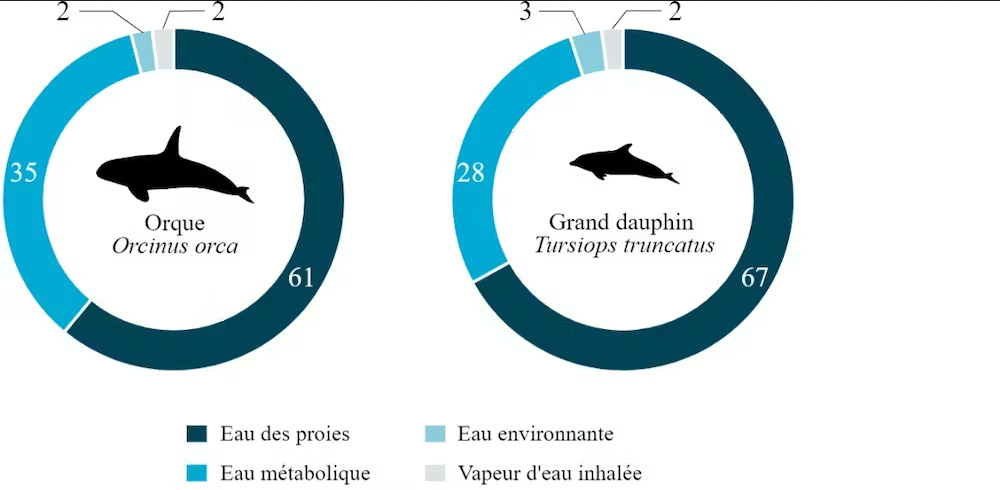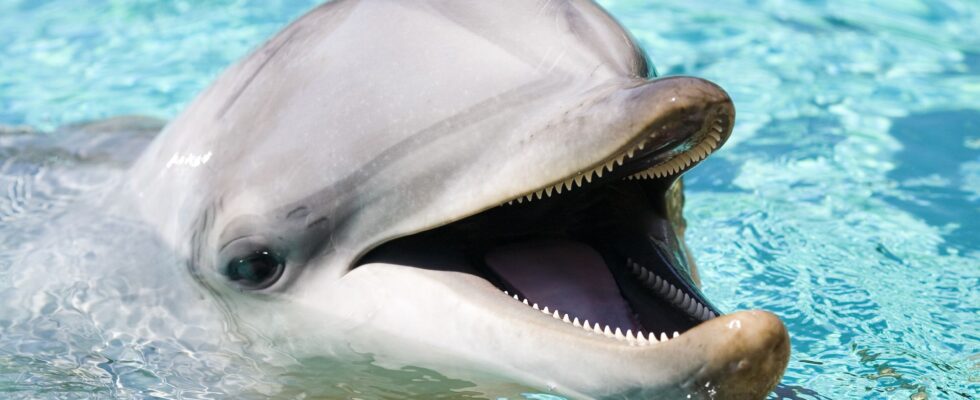To drink, dolphins eat fish. This is what this article from The Conversation explains.
For all animal lovers, September 2023 will remain a dark month. On the banks of Lake Tefé, a tributary of the Amazon in Brazil, 130 pink dolphins (Inia geoffrensis), 23 tucuxi dolphins (Sotalia fluviatilis), but also thousands of fish were found lifeless.
According to the words of members of the Mamirauá Institute, a research center partly financed by the Brazilian Ministry of Science, collected by Le Parisien: “ It is still early to determine the cause of this extreme event, but according to our experts, it is certainly linked to the period of drought and the high temperatures of Lake Tefé, some points of which exceed 39°C. »
What if these dolphins, true icons of Brazilian wildlife, had died of thirst? This seems unlikely, you might say, since they have access to abundant water. But, do you know how dolphins hydrate? Do they actually drink the water they live in? The answer is no, so let’s see how they maintain the correct hydration level.

Ocean dolphins do not drink sea water
For freshwater dolphins, it is still a mystery since no scientific study has currently addressed the question. On the other hand, we have valuable information on how dolphins living in the oceans hydrate.
Contrary to what we might think, dolphins do not drink the salt water in which they live since for them, as for us, excess salt can be fatal. In our study recently published in the scientific journal Journal of Experimental Biology, we have confirmed that dolphins do not drink sea water unlike bony fish (tuna, herring or even sardines), sea turtles and sea birds. Indeed, drinking sea water requires having a means of getting rid of excess salt, and certain marine animals have organs called salt glands to do this.
Dolphins lack it, and their kidneys are not capable of eliminating too much salt. But then, how do they hydrate? Dolphins do not drink “voluntarily” as we might imagine, they hydrate indirectly thanks to the water contained within their prey (between 70 and 85% of the total mass in fish) and the water produced at the level of mitochondria, organelles located in cells, which produce water, called metabolic water, resulting from the degradation of organic molecules ingested by the animal (carbohydrates, proteins, lipids).


The question of hydration in dolphins has agitated the minds of scientists for almost a century. The first physiological studies carried out in the middle of the twentieth century showed that they did not drink, but the experiments were only based on fasted dolphins, and therefore deprived of a source of water: food.
Today, prey water and metabolic water are considered the two main sources of water in dolphins, but their respective contributions remain unknown, particularly in fed animals. To determine the respective proportion of water coming from prey, metabolic water and surrounding salt water in Odontocetes (toothed cetaceans such as dolphins, orcas or even sperm whales as opposed to Mysticetes, whales baleen), we analyzed the isotopic composition of oxygen (18O and 16O, both oxygen atoms, but whose mass differs in their number of neutrons within their nucleus) from the water contained in their body in order to determine its origin.
Taking blood from dolphins
To do this, we measured the oxygen isotopic composition of the water contained in the blood plasma and urine of four orcas, Orcinus orcaand nine bottlenose dolphins, Tursiops truncatus, born and raised in a zoological structure. These values were compared to that of the water contained in their prey and that of the surrounding water (water of the basin in which they live) over a year and at regular intervals.
Then, secondly, these data were used to feed a mathematical model making it possible to predict the contributions of the different water sources of cetaceans.


The isotope results obtained and those of the modeling indicate that prey water constitutes the main source of water intake in orcas and bottlenose dolphins (61–67% of total intakes), followed by metabolic water ( 28–35% of total intake). Metabolic water production was significantly higher in orcas whose diet was richer in lipids. The rest being surrounding seawater accidentally ingested and water vapor inhaled when breathing.
Our research provides new information on the physiology of cetaceans, with major implications regarding conservation issues concerning these organisms. Due to the fact that these animals obtain water from their food to keep them hydrated, overfishing in certain regions of the world and current global warming which affects the distribution of cetacean prey appear to be major challenges for conservation. of marine biodiversity.


This article was co-written by Isabelle Brasseur, Education Manager – Research and Conservation at Marineland Côte d’Azur.
The OXYMORE project is supported by the National Research Agency (ANR), which funds project-based research in France. Its mission is to support and promote the development of fundamental and finalized research in all disciplines, and to strengthen the dialogue between science and society. To find out more, consult the ANR website.
Nicolas Séon, Doctor in paleontology, National Museum of Natural History (MNHN); Peggy Vincent, CNRS researcher in paleontology, National Museum of Natural History (MNHN) and Romain Amiot, Research Manager, Claude Bernard Lyon 1 University
This article is republished from The Conversation under a Creative Commons license. Read the original article.
Do you want to know everything about the mobility of tomorrow, from electric cars to e-bikes? Subscribe now to our Watt Else newsletter!
